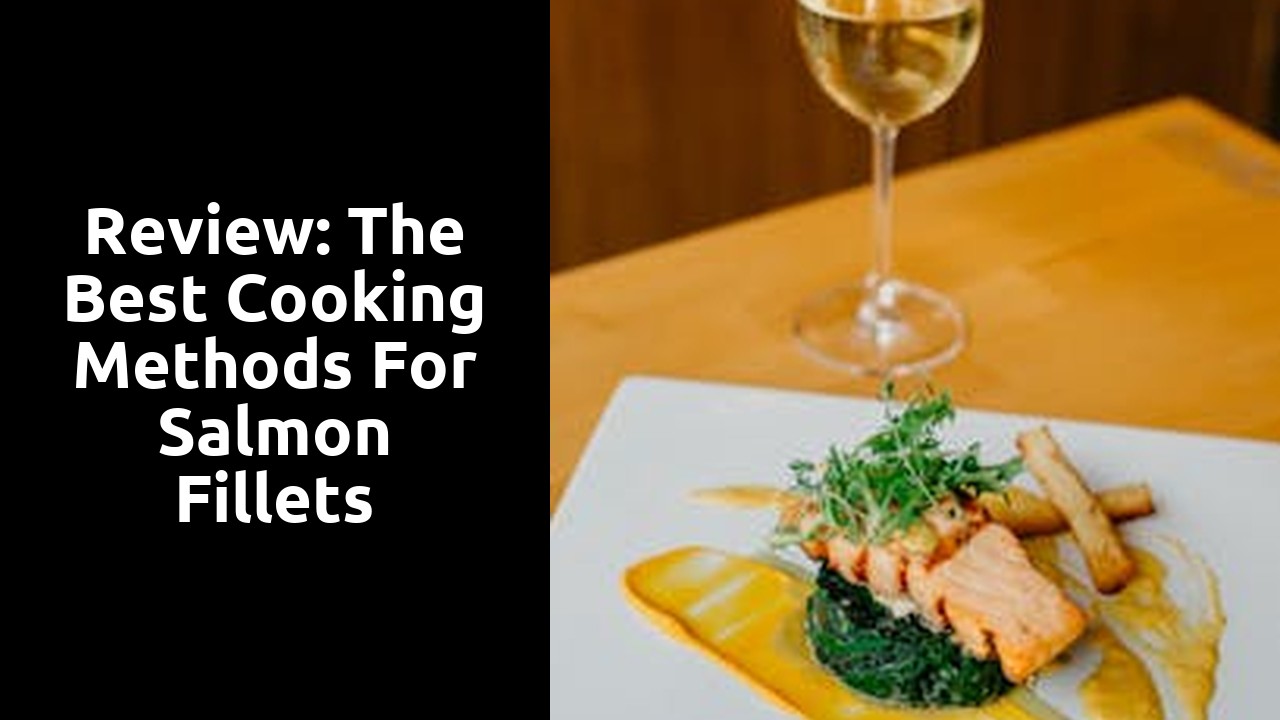Review: The Best Cooking Methods for Salmon Fillets

Broiling
Broiling is a fantastic way to cook salmon fillets, delivering a perfect balance of tender texture and a slightly charred exterior. By positioning the fillets close to the broiler element, the direct heat ensures a quick and efficient cooking process. The high temperature seals in the moisture of the salmon, resulting in succulent fillets that are rich in flavour and beautifully caramelized on the surface.
To elevate the taste profile of broiled salmon, consider creating a simple glaze to brush onto the fillets before placing them under the broiler. The heat will caramelize the sugars in the glaze, imparting a delightful sweet and savory contrast to the dish. Whether you opt for a honey soy glaze or a maple mustard marinade, the broiling method is perfect for showcasing the vibrant flavours of salmon while adding a subtle hint of charred goodness.
Caramelizing the Glaze
Caramelizing the glaze for your salmon fillet is a culinary delight that enhances the natural flavors of the fish. By carefully brushing a delicious glaze over the fillet and then broiling it, you can achieve a sweet and slightly charred finish that adds depth to every bite. The key to successful caramelization lies in the balance of sugars and acids in the glaze, which work together to create a caramel-like coating that complements the richness of the salmon.
When caramelizing the glaze, it's important to keep a close eye on the broiling process to avoid burning the sugars. The ideal result is a perfectly golden-brown caramelization that adds a subtle crunch to the exterior of the salmon fillet, while retaining its moist and tender texture inside. Experimenting with different glazes - such as honey mustard, teriyaki, or maple soy - can elevate the flavour profile of your salmon dish and impress your guests with a succulent and visually appealing entree.
Steaming
Steaming salmon fillets is a gentle and delicate cooking method that preserves the natural flavours of the fish. It involves gently cooking the fillets over simmering water, ensuring that the fish remains moist and tender. Steaming is a healthy cooking technique as it doesn't require the addition of any extra fats or oils.
To steam salmon fillets, a steaming basket or a bamboo steamer can be used. Place the fillets in the steaming basket, season with salt, pepper, and any other desired herbs or spices, then cover and steam for about 10-15 minutes depending on the thickness of the fillets. The result is moist, flaky salmon with a clean and fresh taste.
Preserving the Delicate Flavor
Preserving the delicate flavor of salmon fillets is crucial to fully savouring this delectable fish. When cooking salmon, it is essential to consider using gentle methods that enhance its natural taste without overpowering it. A popular technique for preserving the delicate flavor of salmon is poaching. By gently simmering the fillets in a flavoursome broth, the salmon retains its tenderness and subtle taste, making it a delightful choice for a light and healthy meal.
Another method to maintain the delicate flavor of salmon is by using the sous vide technique. This method involves vacuum-sealing the fillets and cooking them in a precisely controlled water bath. By cooking the salmon at a low temperature for an extended period, the flavours are sealed in, resulting in a tender and flavourful dish. Preserving the delicate flavor of salmon is essential in creating a culinary masterpiece that is sure to impress even the most discerning of palates.
Smoking
Smoking salmon is a traditional method that imparts an irresistible depth of flavor. The process involves exposing the fish to smoke produced by burning wood chips or pellets, creating a smoky essence that enhances the salmon's natural taste. This method is perfect for those who enjoy rich, earthy undertones in their seafood.
Smoking salmon requires patience and attention to detail, ensuring the fish absorbs just the right amount of smoke without becoming overly pungent. By carefully regulating the temperature and choosing the right wood type, such as oak for a robust flavour or alder for a lighter touch, you can craft a delectable smoked salmon dish that will delight your taste buds.
Infusing Smoky Notes
Smoking is a traditional cooking method that imparts a rich smoky flavour to salmon fillets, elevating the taste to a whole new level. The process involves slowly cooking the fillets over low heat, allowing them to absorb the aromatic essence of the wood chips used for smoking. This technique requires patience but rewards you with tender, moist salmon that is bursting with a delightful smoky aroma.
For those who enjoy experimenting with bold flavours, smoking salmon is a fantastic way to add depth and complexity to your dish. Whether using hickory, applewood, or mesquite, each type of wood brings its unique character to the salmon, creating a symphony of flavours that will tantalise your taste buds. By mastering the art of smoking, you can impress your guests with succulent salmon fillets that are not only visually stunning but also a true culinary delight.
Related Links
A Historical Perspective on Baking Salmon FilletsWhat to Consider When Poaching Salmon Fillets
The Ultimate Roundup of Salmon Fillet Recipes
Why Salmon Fillets are Great for Broiling
Why You Should Try Grilling Salmon Fillets